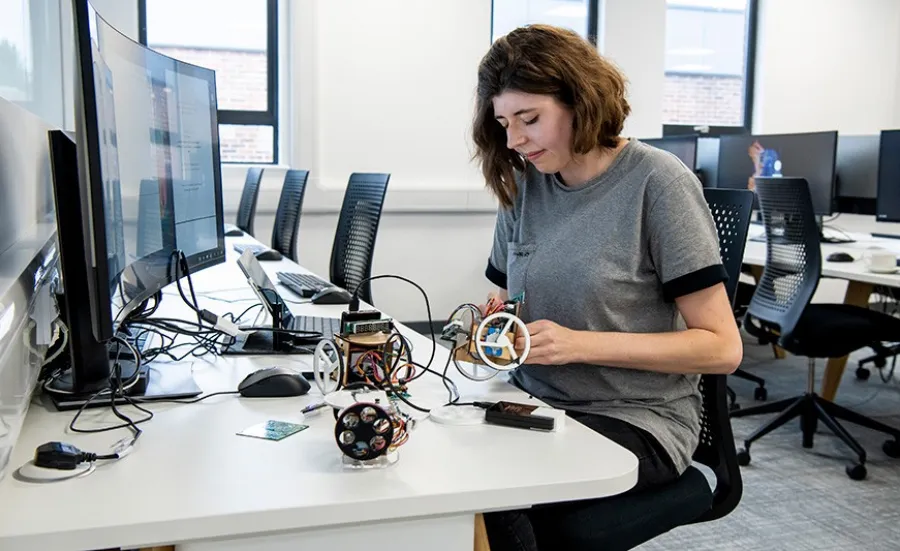Current research degree projects

Explore our current postgraduate research degree and PhD opportunities.

Explore our current postgraduate research degree and PhD opportunities.

Twisted layers of 2D materials allow for new degrees of freedom in quantum matter, leading to novel phenomena such as unconventional ferroelectricity, superconductivity and topological states. This project explores physics of these phase transitions in suspended membranes, measured by advanced nanomechanical and optical probes, to reveal complex phase diagrams within these unique systems.
This project seeks to develop novel fluidic topology optimisation approaches for gas turbine component design by leveraging cutting edge machine and deep learning methods alongside computational fluid dynamics, ultimately aiming to revolutionise the solution of aerodynamic design problems.
With modern computing set to consume around 20% of global electricity by 2030 due to the rise of AI, energy-efficient computing hardware is urgently needed. This project aims to develop electronic and optoelectronic memory devices using ultra-thin layered two-dimensional materials.
This project aims to investigate fluid-structure interaction using travelling waves for propulsion and micro-pumping applications. It combines structural dynamics, fluid mechanics, and advanced numerical modelling to develop efficient, bio-inspired motion strategies for underwater vehicles, biomedical devices, and microfluidic systems.
This project aims to investigate nonlinear dynamic behaviour in space structures, focusing on light, flexible systems in extreme environments. It combines numerical modelling, analytical methods, and experimental validation to enhance structural resilience for space exploration and extraterrestrial colonisation in collaboration with the European Space Agency (ESA).
This project aims to develop advanced nonlinear damping mechanisms for space exploration and extraterrestrial colonisation. Combining numerical modelling, experiments, and compliant mechanisms, this research tackles regolith interactions and extreme conditions to improve structural resilience.
This project focuses on understanding and modelling the vibroacoustic mechanisms of early British pianos. The goal is to create virtual replicas of these historical instruments, with an emphasis on the design of hammers, strings, and soundboards, to preserve and appreciate their original sounds.